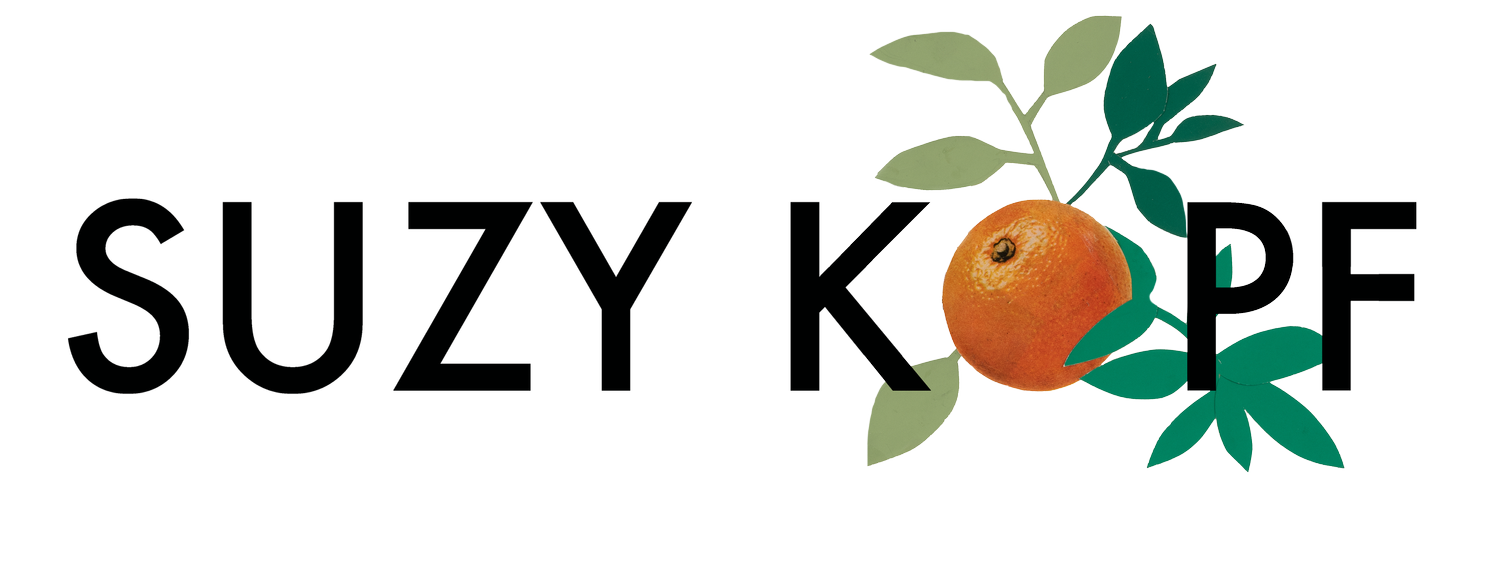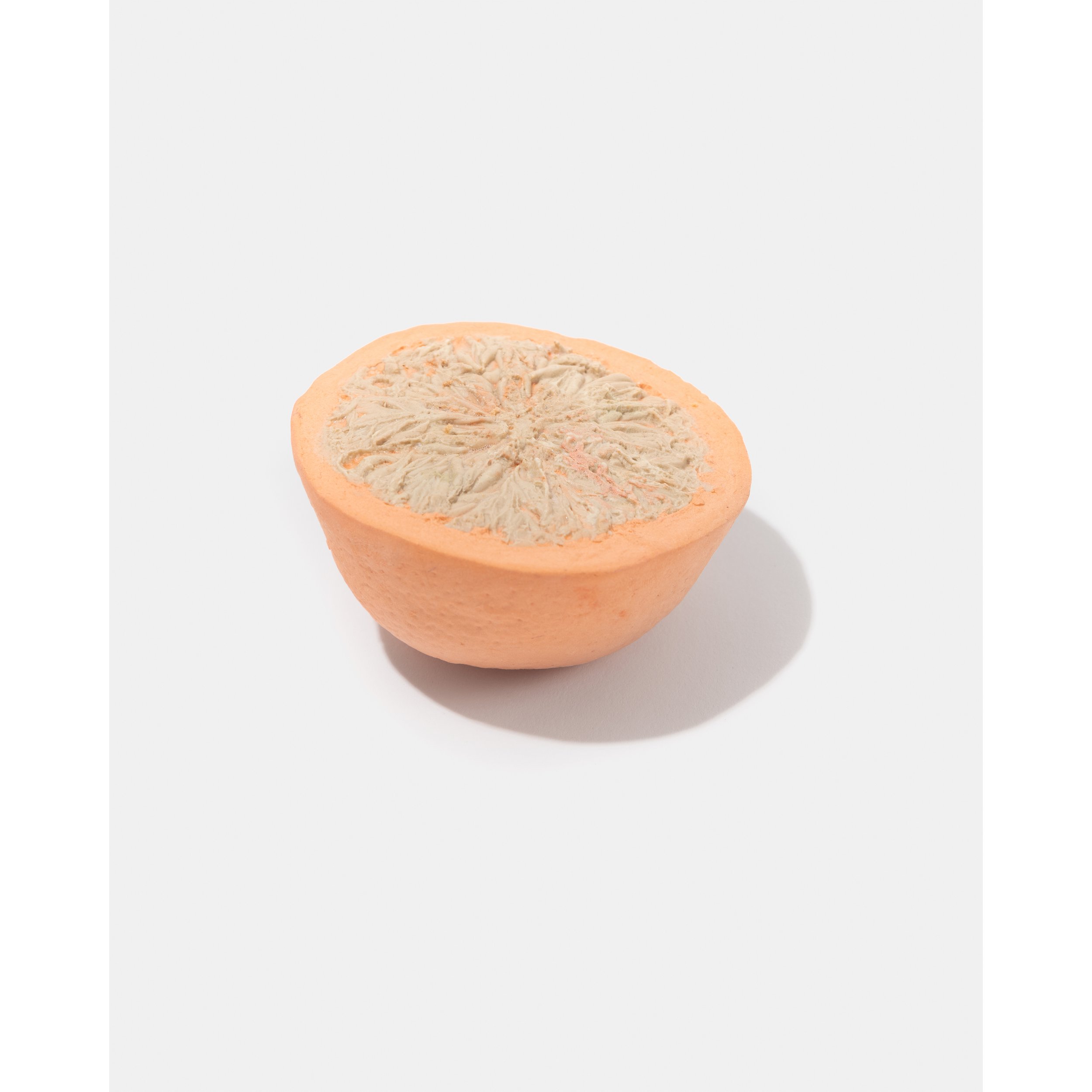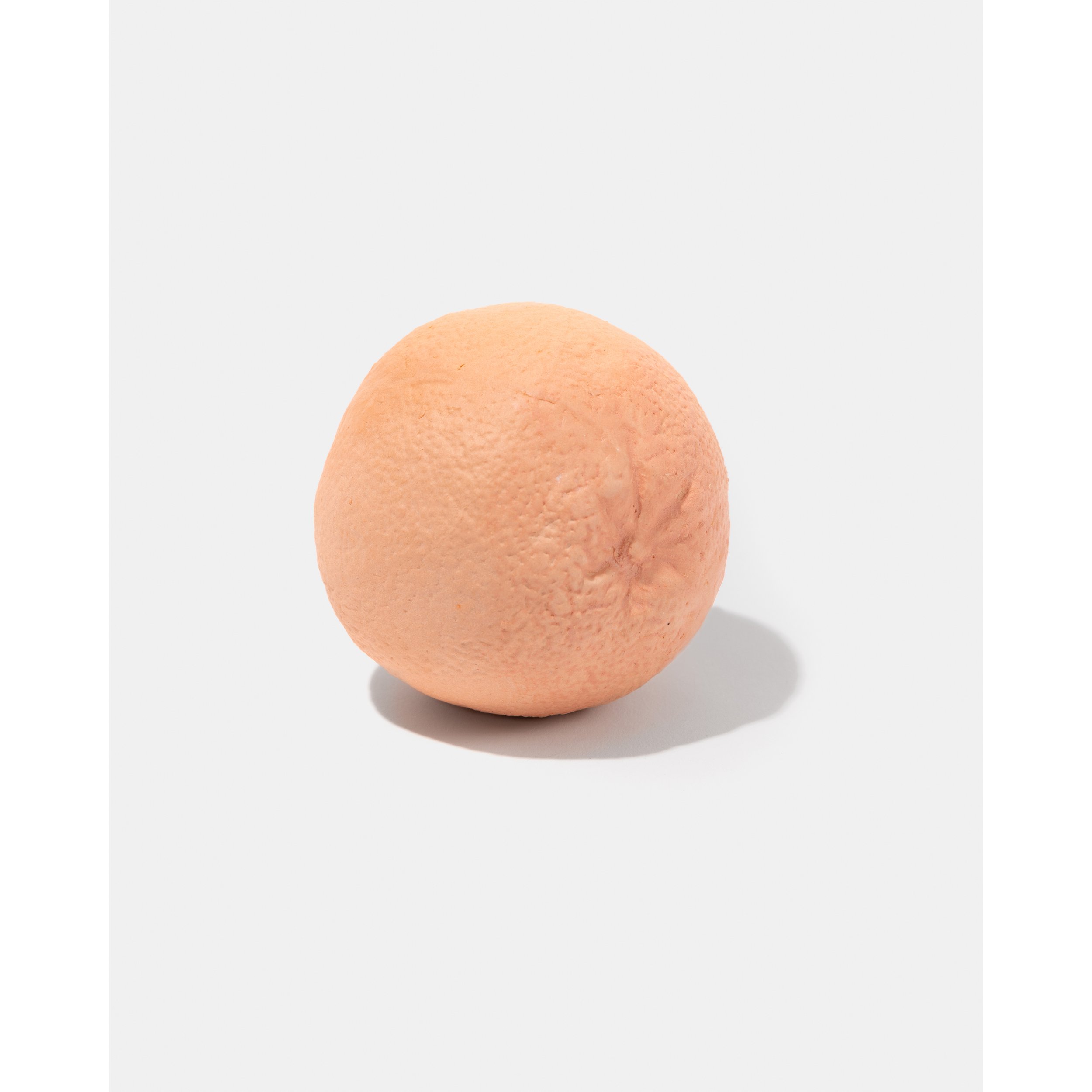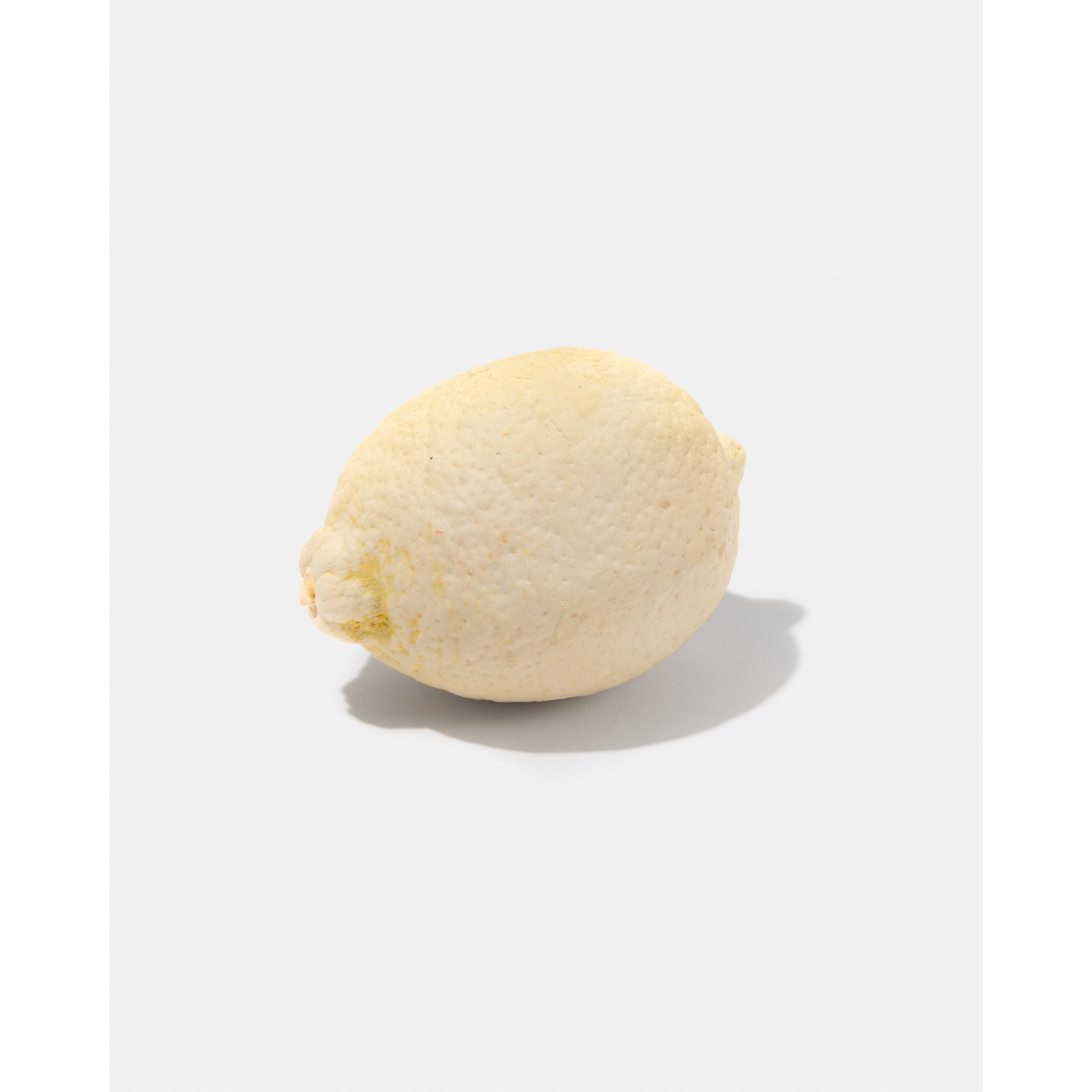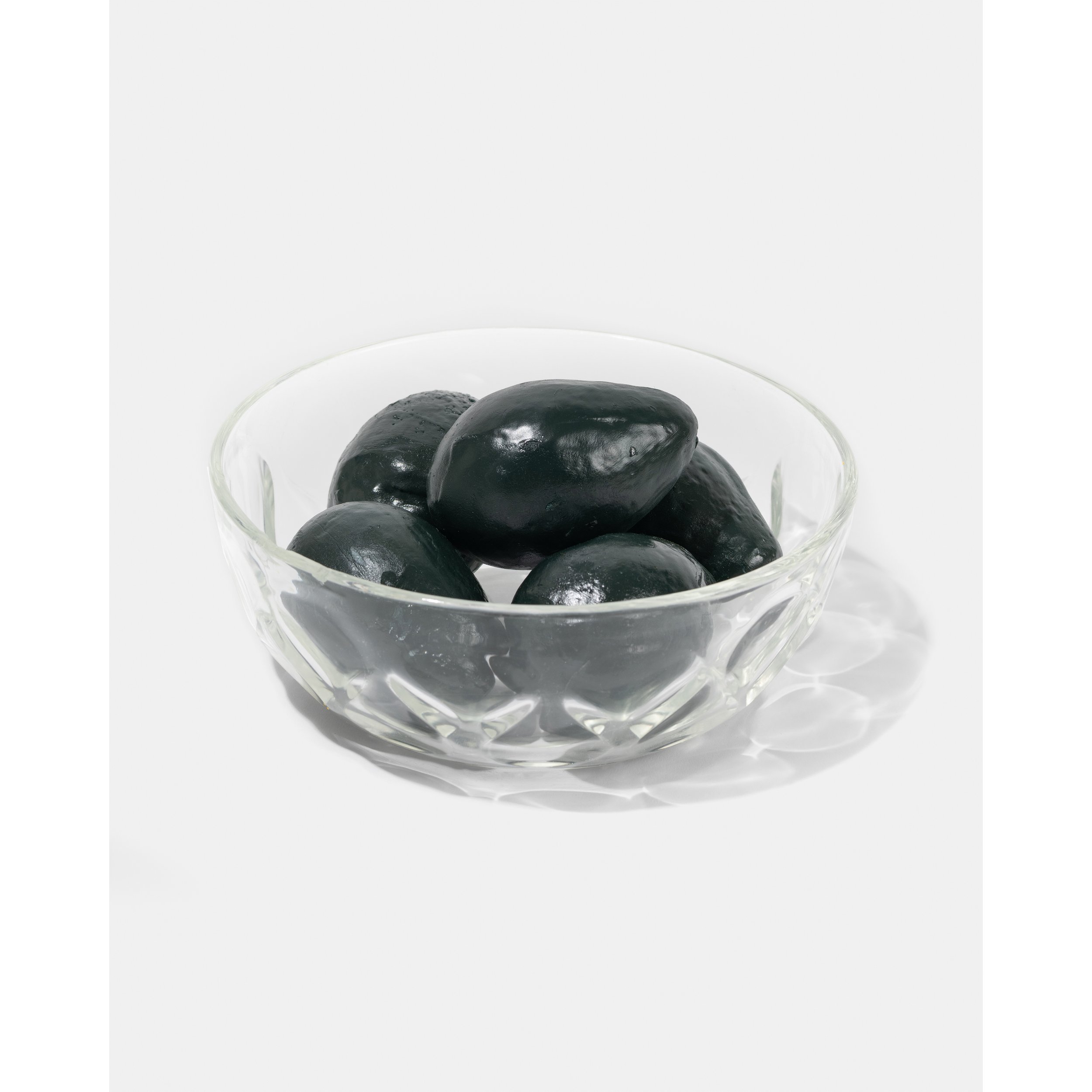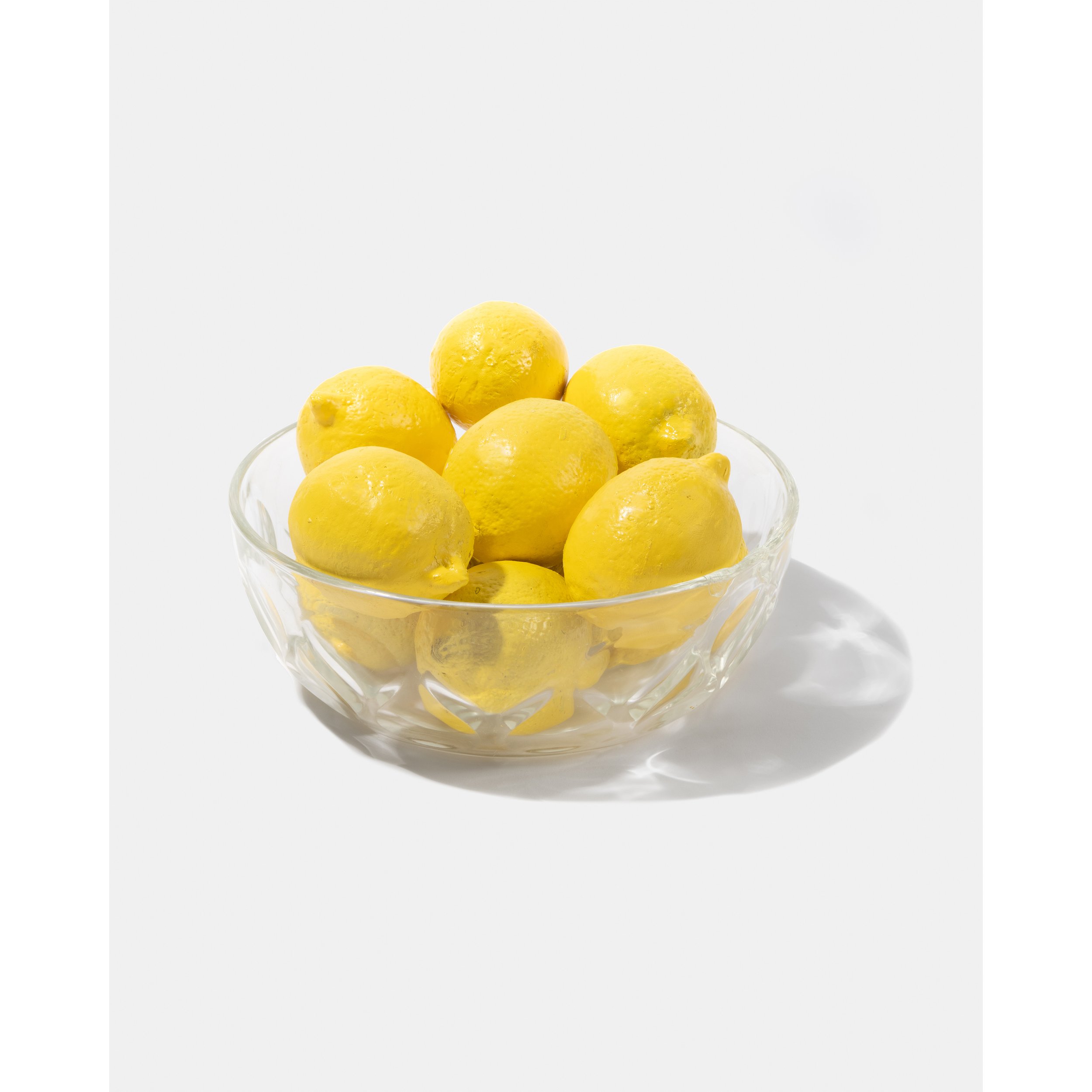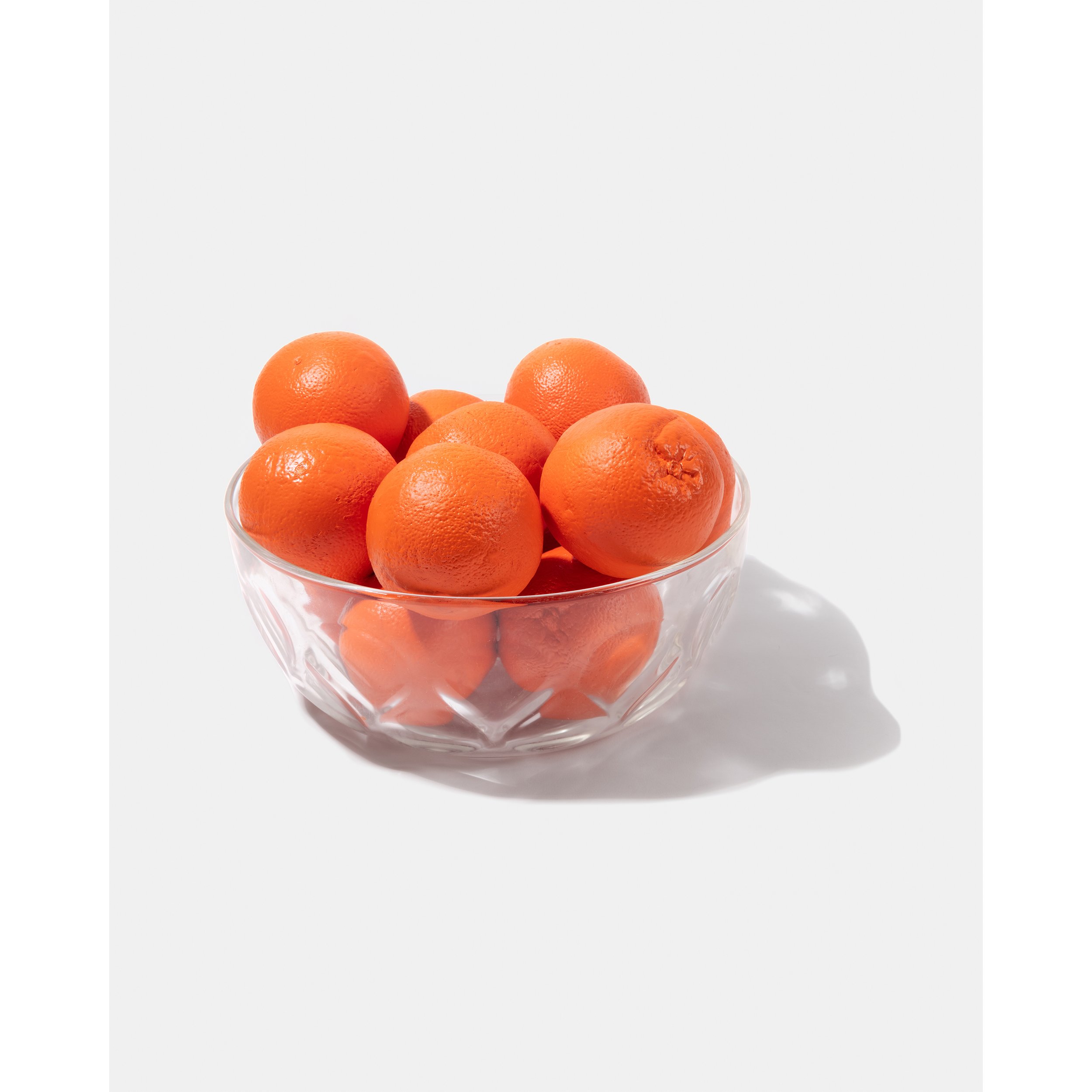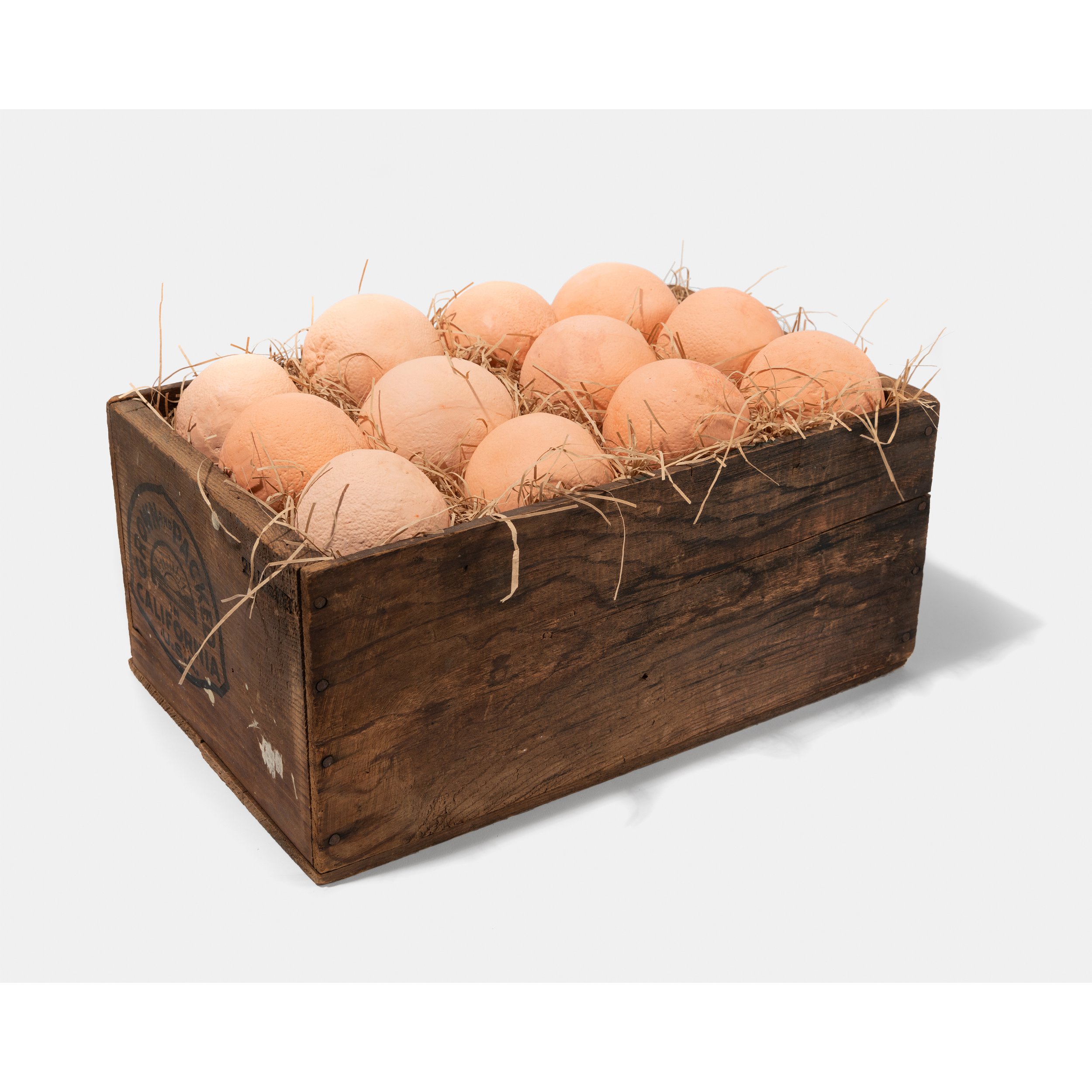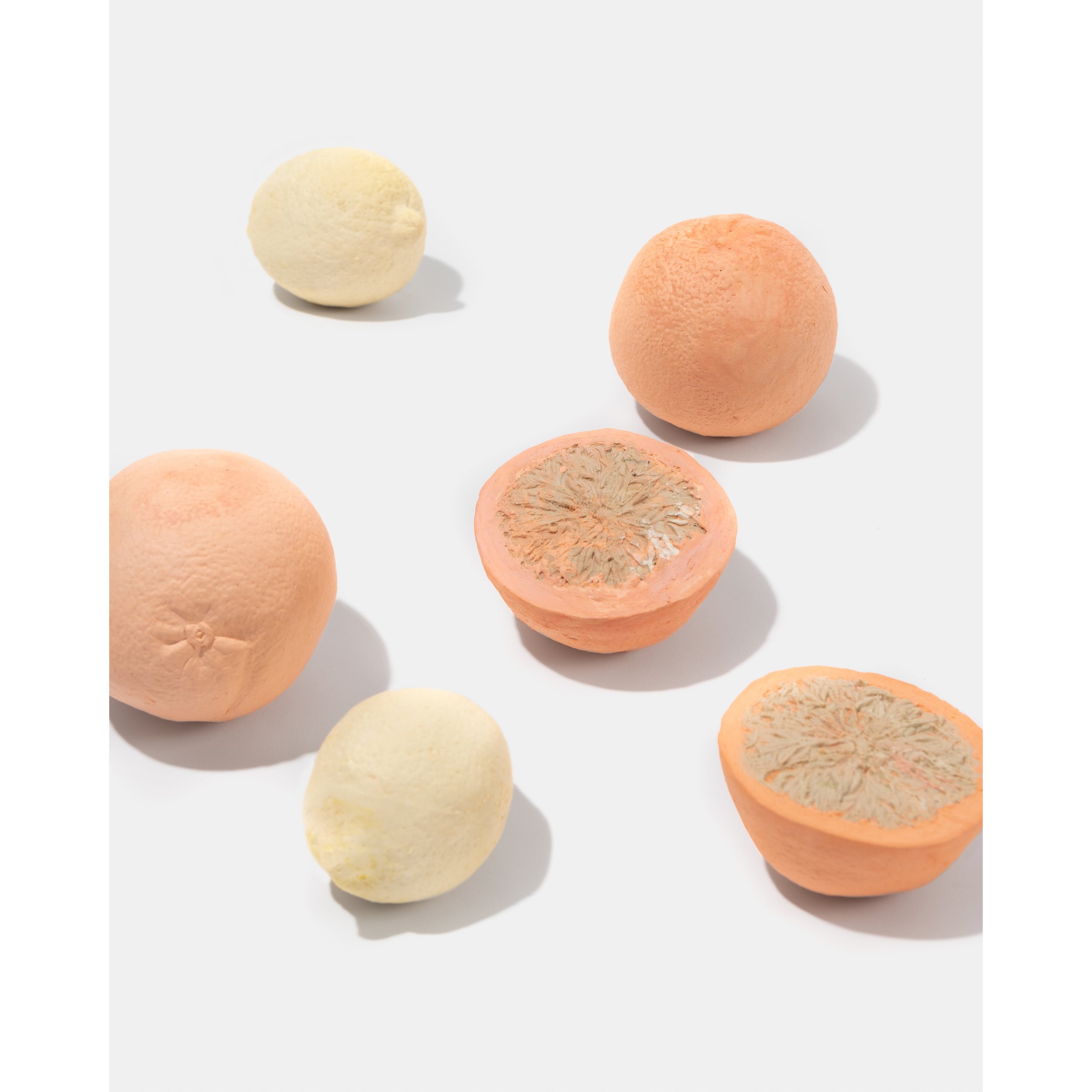This series of 150 slipcast ceramic sculptures are cast from real fruit. Colored with a clay stain before they were fired, they are a paler counterpart to live fruit. Because of this, they resemble how citrus looks before it is packaged, when it is still on the tree and covered with pesticides. The vibrant fruit was spray painted, a reference to a common Florida practice since the 1950s of spraying oranges with Citrus Red 2, an artificial dye that makes oranges appear more orange. Citrus Red 2 is approved for use on food by the FDA but large quantities of it are harmful to humans and it is banned in California and Arizona.
To make this piece, the artist used grant funding to hire Hae Won Sohn, a ceramic artist, to teach her how to create slip cast molds from plaster. The process of making what turned out to be 18 molds was much trial and error but eventually they landed on 9 molds from this fruit was cast over a 14-month period. On a mold casting day, Kopf set up the studio as an assembly line to spend 6-12 hours in repetitive motion, pouring, flipping, and scraping clay to form these hollow orbs. After drying out, the fragile fruit had to be transported, fired, and transported again, typically packed in boxes with protective paper not unlike their live inspiration from a century ago.
